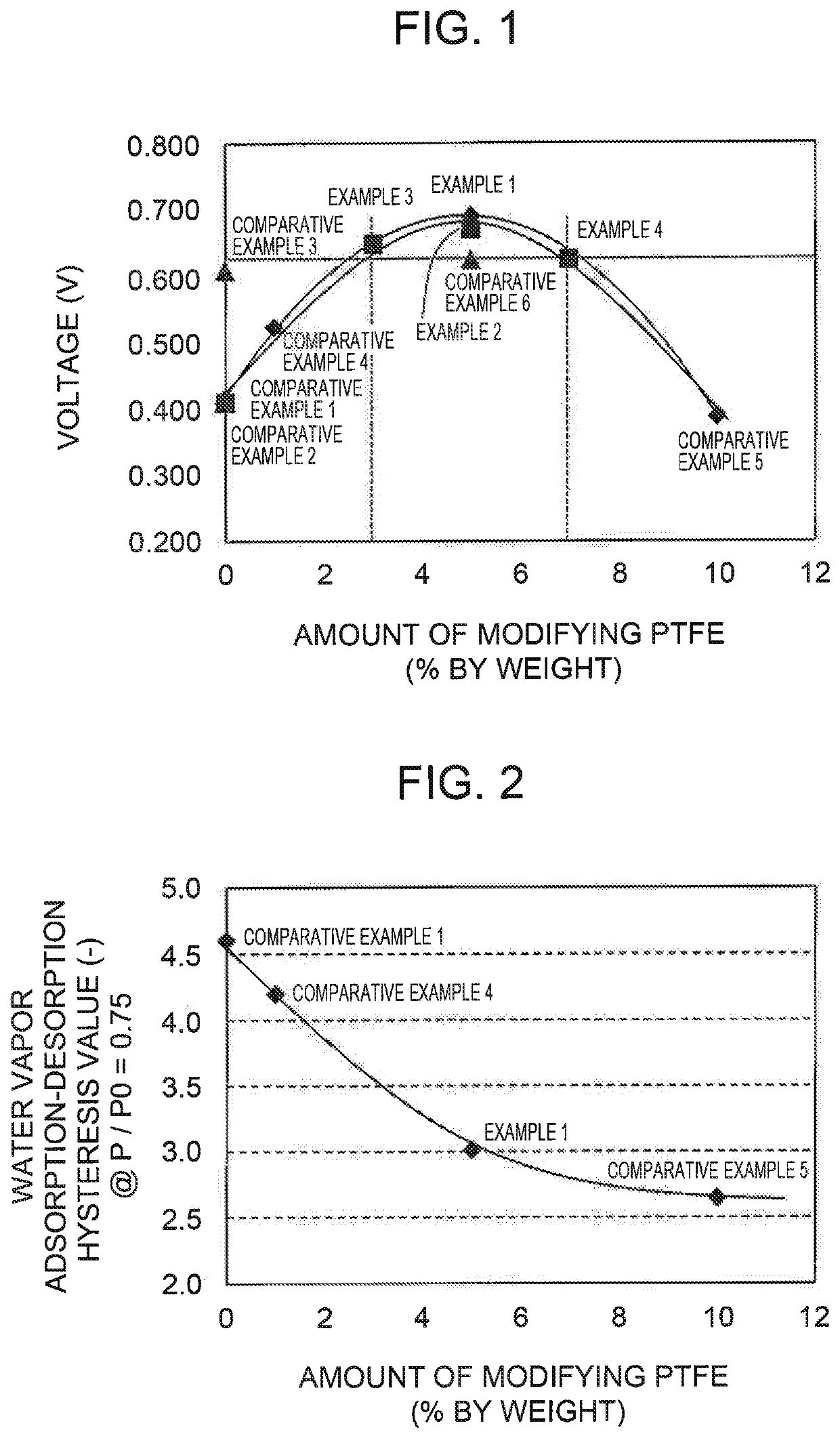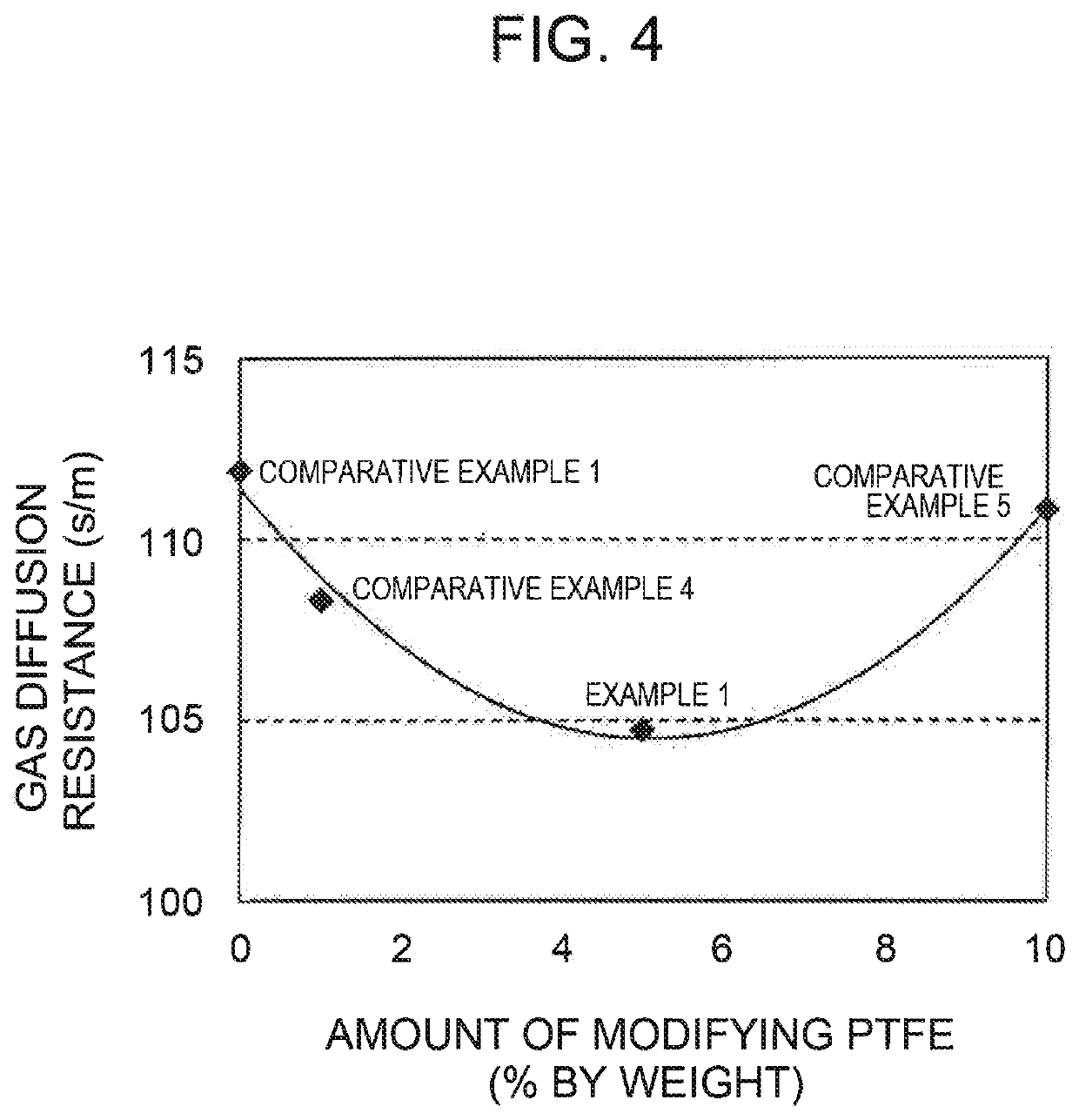Fuel cell electrode catalyst
a fuel cell electrode and catalyst technology, applied in the field of fuel cell electrode catalysts, can solve the problems of reducing the power density of a fuel cell, excessive water remaining in the electrode, and reducing the gas diffusibility, so as to improve the cell performance of the device, improve the gas diffusibility, and enhance the effect of water repellency
- Summary
- Abstract
- Description
- Claims
- Application Information
AI Technical Summary
Benefits of technology
Problems solved by technology
Method used
Image
Examples
example 1
MEA Prepared Using Electrode Catalyst Including PtCo-supported Mesoporous Carbon A and PTFE of 5% by Wight with Respect to Total Weight of Mesoporous Carbon A and PTFE {Weight of PTFE / (Weight of Mesoporous Carbon A+Weight of PTFE)×100=5}
[0115]An MEA was prepared in the same way as in Comparative Example 4 except that 0.1 g of CEFRAL, LUBE V was used instead of 0.02 g of CEFRAL LUBE V in the process (ix) of Comparative Example 4.
example 2
MEA Prepared Using Electrode Catalyst Including PtCo-supported Mesoporous Carbon B and PTFE of 5% by Wight with Respect to Total Weight of Mesoporous Carbon B and PTFE {Weight of PTFE / (Weight of Mesoporous Carbon B+Weight of PTFE)×100=5}
[0116]An MEA was prepared in the same way as in Comparative Example 4 except that the mesoporous carbon B was used instead of the mesoporous carbon A in the process (1)(i) of Comparative Example I cited in Comparative Example 4, and 0.1 g of CEFRAL LUBE V was used instead of 0.02 g of CEFRAL LUBE V in the process (ix) of Comparative Example 4.
example 3
MEA Prepared Using Electrode Catalyst Including PtCo-Supported Mesoporous Carbon B and PTFE of 3% by Wight with Respect to Total Weight of Mesoporous Carbon B and PTFE {Weight of PTFE / (Weight of Mesoporous Carbon B+Weight of PTFE)×100=3}
[0117]An MEA was prepared in the same way as in Comparative Example 4 except that the mesoporous carbon B was used instead of the mesoporous carbon A in the process (1)(i) of Comparative Example 1 cited in Comparative Example 4, and 0.06 g of CEFRAL LUBE V was used instead of 0.02 g of CEFRAL LUBE V in the process (ix) of Comparative Example 4.
PUM
| Property | Measurement | Unit |
|---|---|---|
| pore size | aaaaa | aaaaa |
| pore sizes | aaaaa | aaaaa |
| thickness | aaaaa | aaaaa |
Abstract
Description
Claims
Application Information
 Login to View More
Login to View More - R&D
- Intellectual Property
- Life Sciences
- Materials
- Tech Scout
- Unparalleled Data Quality
- Higher Quality Content
- 60% Fewer Hallucinations
Browse by: Latest US Patents, China's latest patents, Technical Efficacy Thesaurus, Application Domain, Technology Topic, Popular Technical Reports.
© 2025 PatSnap. All rights reserved.Legal|Privacy policy|Modern Slavery Act Transparency Statement|Sitemap|About US| Contact US: help@patsnap.com



